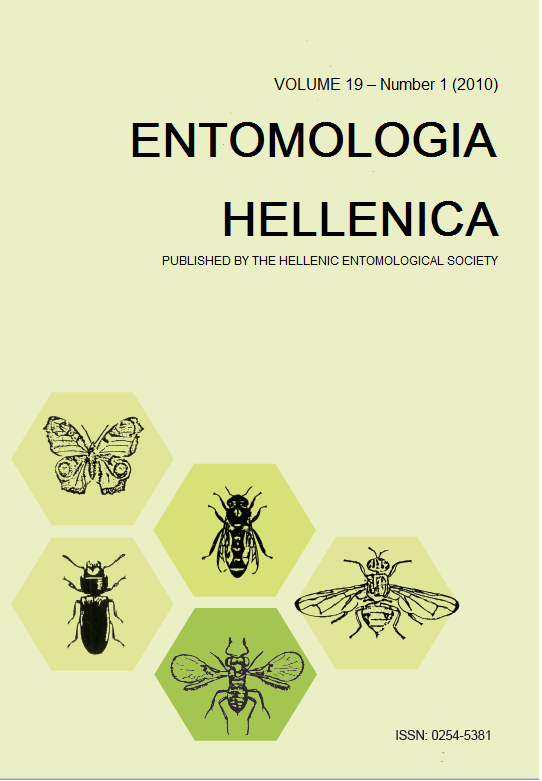Assessment of the performance of some new insecticides for the control of the vine mealybug Planococcus ficus in a Tunisian vineyard

Abstract
Mealybugs (Hemiptera: Pseudococcidae) cause major economic losses in many Tunisian grapegrowing areas. In an attempt to improve management strategies for the Vine Mealybug (VM) Planococcus ficus (Signoret), three insecticides, imidacloprid, Prev-Am® and spirotetramat, were evaluated for their effect on this insect on vine, with reference to methidathion. The systemic insecticide spirotetramat (Movento® 150 OD) provided the greatest control performance of the VM populations, compared to the contact insecticide methidathion, the systemic insecticide imidacloprid applied through furrow irrigated system, and to Prev-Am®, a new contact biopesticide. Three weeks after treatment, VM eggs and adult females were missing from spirotetramat-treated vines. Additionally, spirotetramat supplied a long-residual activity against VM populations and prevented further spread of these insects on vine leaves. Therefore, this new systemic insecticide could be incorporated in an Integrated Pest Management program for VM control in Tunisian vineyards. Despite its short-residual activity, Prev-Am® was shown to be more effective than both methidathion and imidacloprid, mainly on VM eggs and L3 nymphs, and resulted in the highest level of VM L1-L2 nymph decrease on vine trunks. Hence, this biopesticide might prove useful for VM management in vineyards.
Article Details
- How to Cite
-
Mansour, R., Grissa Lebdi, K., & Rezgui, S. (2017). Assessment of the performance of some new insecticides for the control of the vine mealybug Planococcus ficus in a Tunisian vineyard. ENTOMOLOGIA HELLENICA, 19(1), 21–33. https://doi.org/10.12681/eh.11591
- Issue
- Vol. 19 No. 1 (2010)
- Section
- Articles

This work is licensed under a Creative Commons Attribution-NonCommercial-ShareAlike 4.0 International License.
Authors who publish with this journal agree to the following terms:
Authors retain copyright and grant the journal right of first publication with the work simultaneously licensed under a Creative Commons 4.0 license.
Authors are able to enter into separate, additional contractual arrangements for the non-exclusive distribution of the journal's published version of the work (e.g. post it to an institutional repository or publish it in a book), with an acknowledgement of its initial publication in this journal. Authors are permitted and encouraged to post their work online (preferably in institutional repositories or on their website) prior to and during the submission process, as it can lead to productive exchanges, as well as earlier and greater citation of published work.


